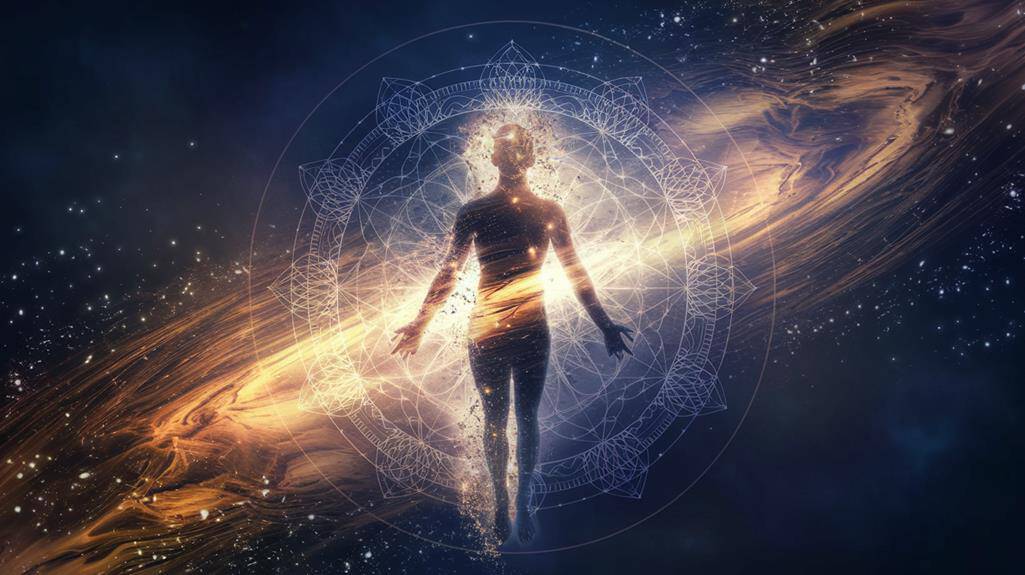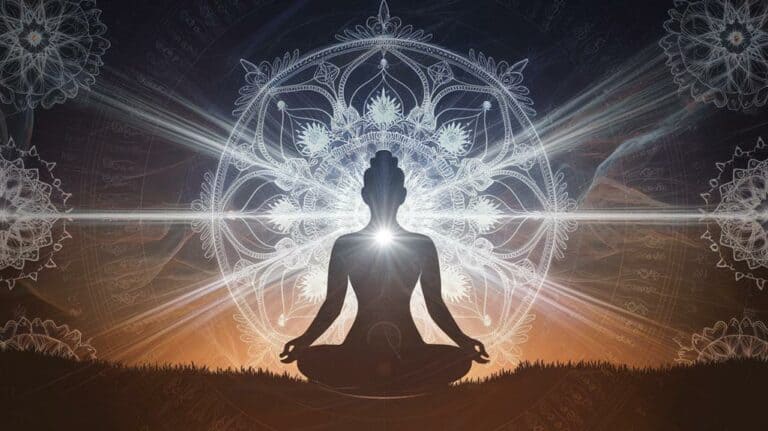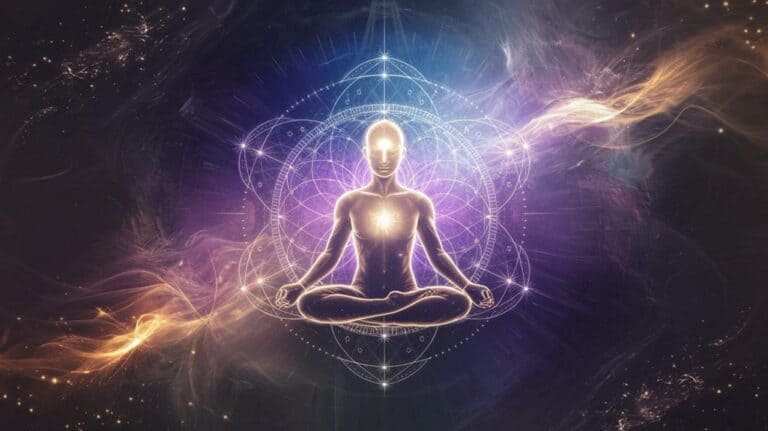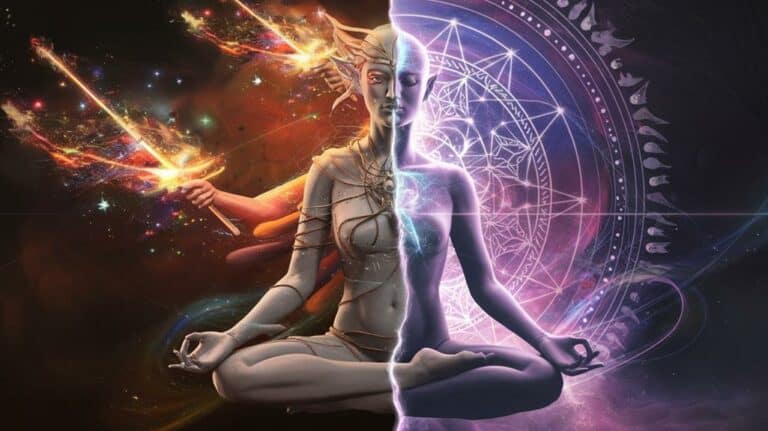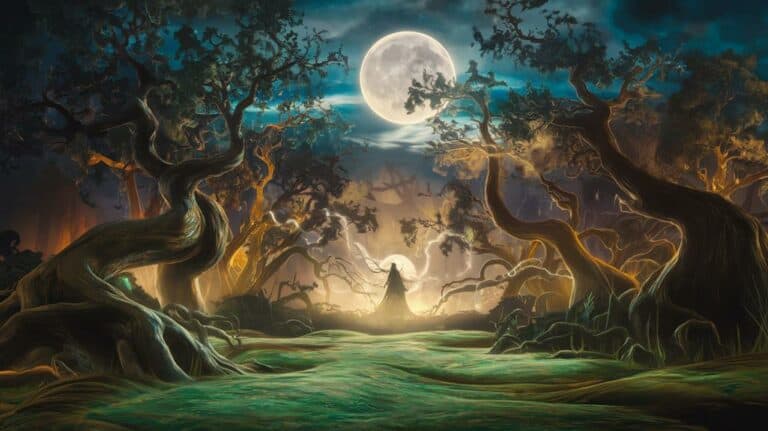The Concept of Union With the Divine or Ultimate Reality
You’ve likely encountered moments when you’ve felt a deep connection to something greater than yourself—perhaps while walking in nature, during meditation, or in the midst of profound silence. This universal longing for union with the divine or ultimate reality has shaped human consciousness and spiritual traditions throughout history. It’s a pursuit that transcends cultural boundaries, appearing in various forms from Buddhist enlightenment to Christian mysticism, from Hindu moksha to Sufi ecstasy. Whether you’re seeking answers through contemplative practice, devotional worship, or philosophical inquiry, you’ll find that this timeless quest offers pathways to understanding your true nature and relationship with the sacred.
Historical Perspectives Across World Religions
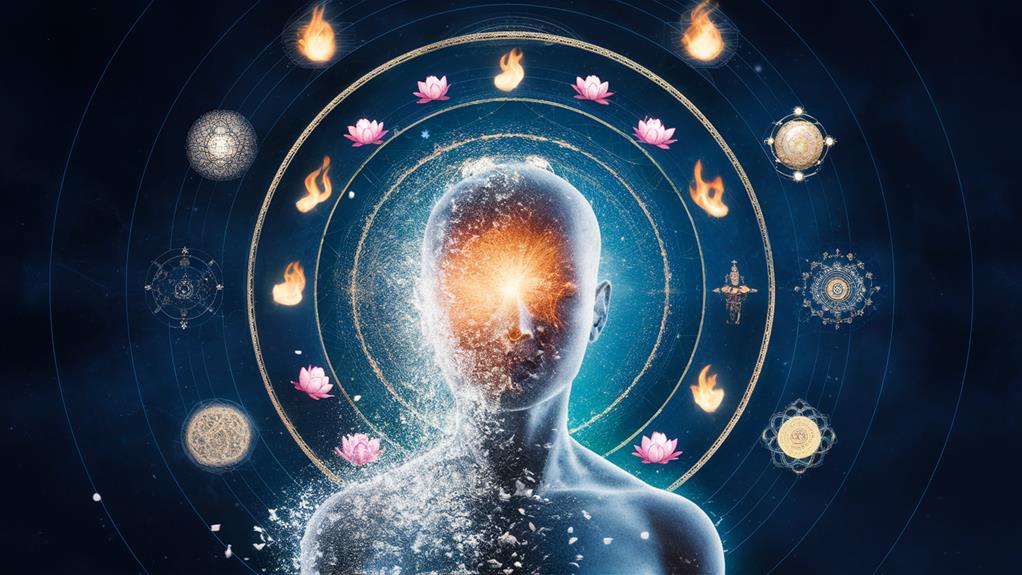
The quest for divine union has shaped religious traditions throughout human history. You’ll find this profound yearning expressed across cultures, from the mystical practices of Sufism to the deep meditations of Buddhist monks seeking Nirvana. This timeless pursuit transcends geographical boundaries and speaks to your innermost longing for connection with something greater than yourself.
As you explore these historical pathways, you’ll discover how Hindu yogis have sought moksha through disciplined practices, while Christian mystics like Teresa of Avila and John of the Cross wrote of their soul’s journey toward unity with God.
The Jewish Kabbalah tradition offers you methods of ascending through spiritual dimensions, while ancient Egyptian initiates sought transformation through sacred rituals and symbolic death.
In indigenous traditions, you’ll encounter shamanic practices that bridge the physical and spiritual worlds, offering direct experience of the divine through ceremonial practices.
These varied approaches share a common thread: they’ve provided seekers like you with tested pathways toward transcendence, each offering unique methods to pierce the veil between ordinary consciousness and divine reality.
Mystical Practices and Sacred Rituals
Mystical practices and sacred rituals form the cornerstone of humanity’s quest for divine union, offering you concrete methods to transcend ordinary consciousness. Through these time-tested approaches, you’ll discover pathways that mystics and seekers have walked for millennia, each step bringing you closer to that ineffable connection with the sacred.
You’ll find these transformative practices across traditions: meditation that stills your racing mind, contemplative prayer that opens your heart, sacred dance that aligns your body with cosmic rhythms, and ceremonial rites that connect you to ancient wisdom.
These aren’t mere routines but profound technologies of transformation that can shift your consciousness beyond everyday awareness.
When you engage in these practices, you’re participating in a universal language of the soul. Whether you’re drawing sacred geometries, chanting ancient mantras, or moving through ritualized postures, you’re activating deeper layers of awareness.
Each practice serves as a key, revealing doors to expanded states of being where the boundaries between self and divine begin to dissolve, leading you toward that mysterious threshold where individual consciousness meets universal truth.
Eastern Paths to Divine Unity
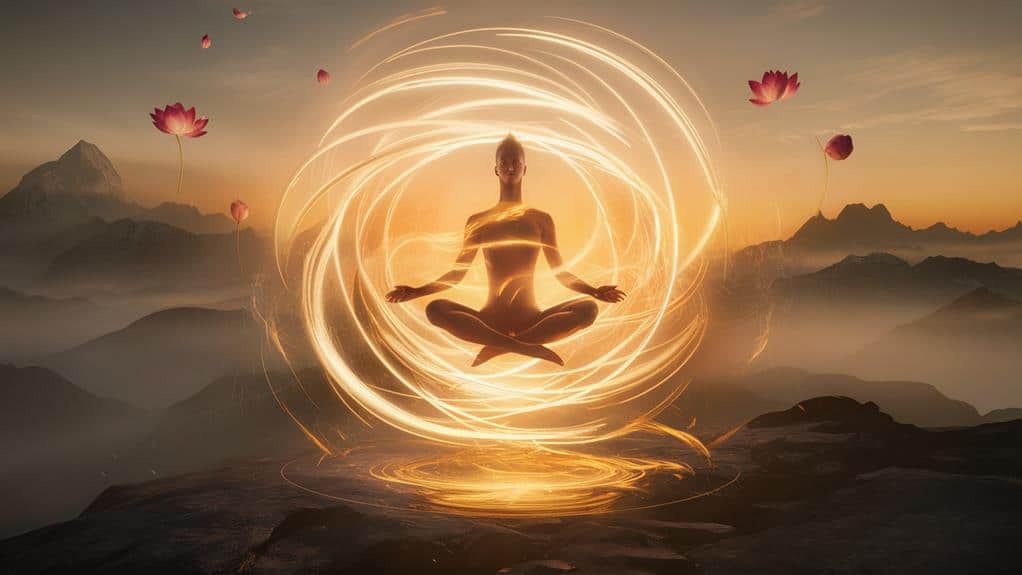
Ancient Eastern traditions offer three primary paths to divine unity: bhakti (devotional love), jnana (wisdom and knowledge), and karma (selfless action). Each path represents a unique approach to transcendence, allowing you to choose the way that resonates most deeply with your spiritual nature.
Through bhakti, you’ll discover the transformative power of devotional love, where your heart opens completely to the divine presence. You’ll find yourself dissolving into the object of your devotion, whether through prayer, chanting, or ecstatic worship.
The jnana path calls you to pierce the veil of illusion through deep contemplation and self-inquiry, leading you to recognize your fundamental oneness with ultimate reality. You’ll gradually shed layers of false identification until only pure awareness remains.
In karma yoga, you’ll learn to transform every action into a sacred offering, releasing attachment to results while serving with complete presence. You’ll find that when you act without ego-driven motivations, your very being becomes a channel for divine expression.
These paths aren’t mutually exclusive—you may find yourself drawn to different approaches at different times, each contributing to your ultimate awakening.
Western Approaches to Sacred Union
While Eastern paths to divine unity often emphasize non-dualistic approaches, Western traditions have developed their own distinct routes to sacred union through contemplative prayer, mystical practices, and devotional disciplines.
You’ll find these paths most significantly expressed through Christian mysticism, Kabbalah, and Western esoteric traditions, each offering unique frameworks for divine communion.
In the Christian mystical tradition, you’re invited to pursue unity through what’s called the “via negativa” – stripping away all that isn’t God – or through the “via positiva” of affirming divine attributes in creation.
You’ll discover that contemplative prayer practices, like those developed by Teresa of Avila or John of the Cross, guide you through stages of spiritual awakening toward divine union.
The Kabbalistic path offers you a systematic approach through the Tree of Life, where you can ascend through various spiritual levels, each bringing you closer to the divine source.
Western esoteric traditions provide you with alchemical and hermetic practices that transform your consciousness through symbolic work and ritual, teaching that you’re capable of achieving a state where the microcosm of your being reflects the divine macrocosm.
Philosophical Foundations of Divine Connection
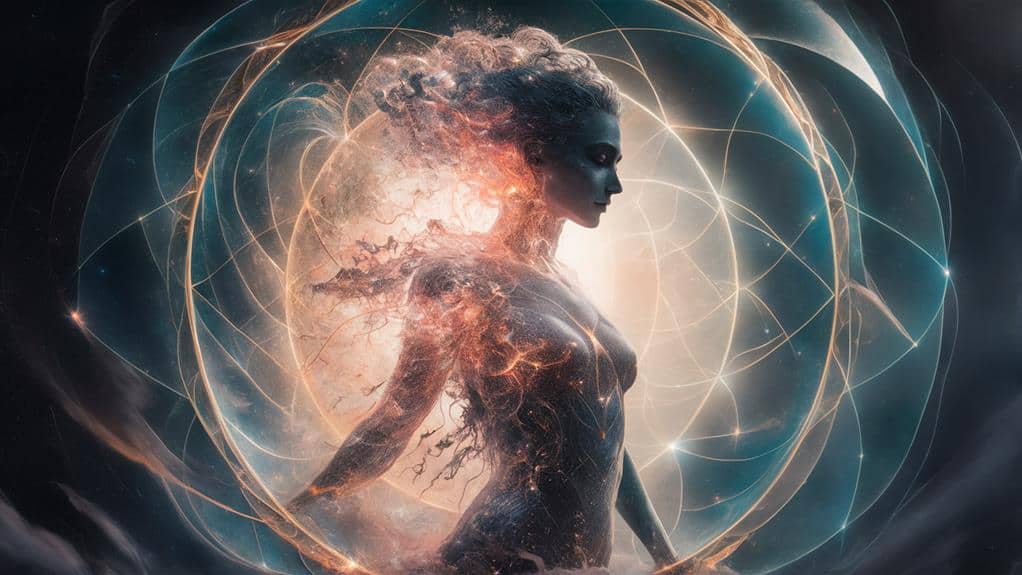
The philosophical underpinnings of divine connection stretch back to humanity’s earliest attempts to understand our relationship with the sacred. You’ll find these foundations embedded in both Eastern and Western traditions, where thinkers have grappled with questions of transcendence, immanence, and the very nature of ultimate reality.
When you explore this terrain, you’ll discover that philosophers have proposed various frameworks for understanding divine connection. You might resonate with Plato’s concept of the Forms, where your soul yearns to reunite with perfect truth, or perhaps you’ll find wisdom in Vedantic ideas of Atman merging with Brahman.
These perspectives aren’t merely abstract theories – they’re roadmaps for your own spiritual journey. In seeking to bridge the finite and infinite, you’re participating in a timeless philosophical quest.
Whether through contemplative practices, rational inquiry, or mystical experience, you’re engaging with questions that have challenged humanity’s greatest minds. The philosophical foundations suggest that your capacity for divine connection isn’t just theoretical – it’s woven into the very fabric of your consciousness, waiting to be realized through dedicated exploration and understanding.
Modern Psychology and Spiritual Awakening
Modern psychological research increasingly validates what mystics have known for millennia: spiritual awakening creates measurable changes in the brain and consciousness. As you explore your own path toward divine connection, you’ll discover that contemporary neuroscience has identified specific brain regions activated during meditation, prayer, and transcendent experiences.
These findings bridge the ancient wisdom traditions with empirical understanding, revealing how your consciousness can expand beyond ordinary perception.
You’ll find that psychological frameworks now acknowledge the transformative power of spiritual practices, recognizing how they can reshape your neural pathways and enhance your emotional regulation. When you engage in contemplative practices, you’re not just performing abstract rituals – you’re actively rewiring your brain’s response to stress while deepening your capacity for insight and compassion.
Research has shown that long-term practitioners demonstrate increased gray matter in areas associated with self-awareness and emotional processing.
This convergence of psychology and spirituality offers you a scientifically-grounded path to transformation, validating your inner experiences while providing measurable markers of progress on your journey toward union with the divine.
Sacred Texts and Divine Union
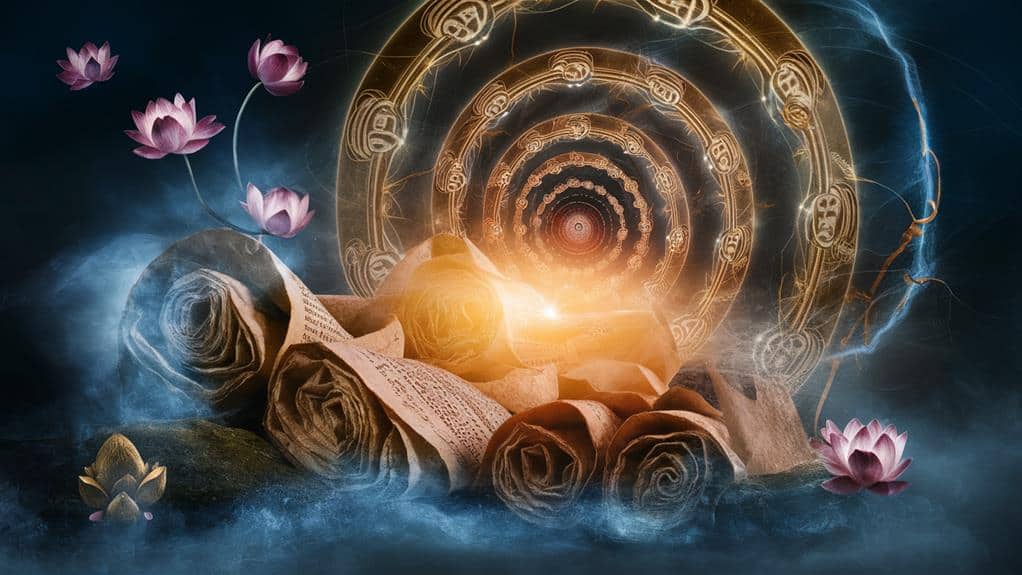
Throughout history, sacred texts have served as profound roadmaps guiding seekers toward divine union. You’ll find these timeless writings across traditions – from the Upanishads’ declaration “Tat Tvam Asi” (That thou art) to the Bible’s “The kingdom of God is within you.” These texts don’t merely describe divine union; they become vessels through which you can experience transcendent wisdom firsthand.
As you explore these ancient writings, you’ll discover they’re more than historical documents – they’re living transmissions of awakened consciousness. The Bhagavad Gita reveals paths of devotion, knowledge, and selfless action. Sufi poetry invites you to dissolve into the Beloved’s embrace. Buddhist sutras map the territory of non-dual awareness. Each tradition offers unique metaphors and methods, yet they’re united in pointing toward your essential nature.
You’ll notice these texts often employ paradox and mystery, challenging your ordinary mind while awakening deeper knowing. They don’t just inform – they transform, serving as mirrors reflecting your own divine nature.
Through contemplation and practice with these teachings, you’re gradually led to recognize what you’ve always been: inseparable from the Ultimate Reality they describe.
The Transformative Nature of Enlightenment
Sacred texts illuminate the path, but enlightenment itself brings radical transformation that reshapes your entire being. As you journey toward divine union, you’ll discover that enlightenment isn’t merely an intellectual understanding or momentary revelation – it’s a complete metamorphosis of your consciousness that affects every aspect of your existence.
You’ll find that your perception of reality fundamentally shifts as the barriers between subject and object dissolve. The mundane world you once knew transforms into a living tapestry of interconnected meaning, where every moment reveals the sacred within the ordinary. Your old concepts of self begin to fall away as you experience a profound expansion of identity beyond personal limitations.
This transformation isn’t always gentle – it often demands that you release cherished beliefs and comfortable illusions. Yet as your awareness expands, you’ll discover an inherent freedom that transcends circumstance.
The very nature of your experience changes: time flows differently, compassion deepens naturally, and you begin to recognize the divine presence that’s always been here. What once seemed like distant spiritual ideals become your lived reality as enlightenment rewrites the core programming of your consciousness.



